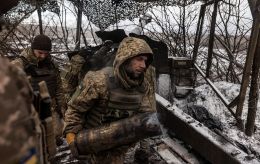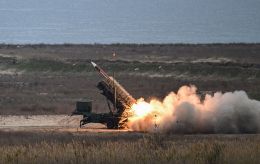'Real hostilities here': How Ukraine strengthens northern borders and counters Russian subversive groups
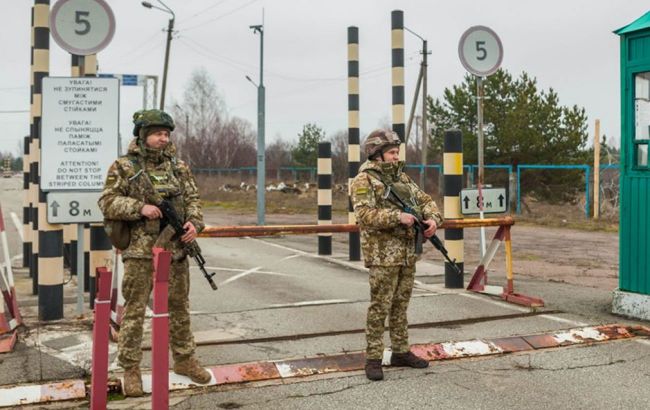 Closed border crossing point between Ukraine and Belarus (Oleh Bozhko, RBC-Ukraine)
Closed border crossing point between Ukraine and Belarus (Oleh Bozhko, RBC-Ukraine)
Two years after the full-scale invasion, Ukraine is actively fortifying its borders with Russia and Belarus, repelling enemy attacks, and countering subversive groups. More details about Ukraine's long reistance in RBC-Ukraine's report below.
It's been two years of Ukraine's heroic resistance against Russian aggressors. On February 24, 2022, the occupiers launched a widescale offensive on the regions of Luhansk, Donetsk, Kharkiv, Sumy, and Chernihiv.
On that morning, Ukrainian border guards were among the first to encounter enemy forces. At one of the now-closed border checkpoints with Belarus, the first defenders of the border were injured in the shelling. On the same day, various units of the Armed Forces, along with the State Border Guard Service, rallied to defend their land. Some of these events will go down in history as the Battle of Chernihiv.
Two years since the unprecedented aggression against Ukraine began, the country continues to strengthen its borders and resist enemy subversive groups, which regularly infiltrate from Russian territory. Read on below to learn how this unfolds.
'Those days taught us resilience.' Reflections two years after defending Chernihiv
When the first Russian missiles hit Ukrainian cities on the morning of February 24, 2022, reserve officer Vadym Mysnyk was already standing near the Chernihiv TV tower. Hundreds of volunteers gathered there, ready to defend Chernihiv. Many people already had backpacks, it was clear they had prepared in advance. Vadym met many acquaintances with whom he had fought in the east since 2014. Part of the people, especially those with combat experience, were immediately distributed to various locations in the city and region.
The soldiers defending Chernihiv and ready to meet the enemy were issued rifles and anti-tank grenade launchers. The defense of the city was formed from different units.
"The 21st battalion of the first tank brigade was with us. In case columns of enemy equipment approached the city, we were to destroy them. We understood that Chernihiv had strategic importance, and the occupiers wanted to use it as a path to Kyiv. It was important to hold the defense. By the evening of the first day, we interrogated the first prisoner we captured along the direction near the range in Honcharivske. He was a contract soldier, around 30 years old. Like all of them back then, he claimed he didn't know where he was going, that they were on 'exercises,'" Vadym recalls those events in an interview with RBC-Ukraine.

Photo: Russian troops attacked Chernihiv in the first hours of large-scale aggression (Getty Images)
Meanwhile, the enemy had already begun to hit Chernihiv with artillery fire, and aviation was operating as well. On February 25, the SSU (Security Service of Ukraine) building was shelled, where archives, including thousands of files of repressed Ukrainians, burned down.
Vadym Mysnyk was also involved in evacuating the wounded. The city's hospitals were overwhelmed, there were power outages and water supply issues. The city found itself under siege. Intelligence mapped out routes through which the wounded could be evacuated to Kyiv. Vadym participated in five evacuations of the wounded from Chernihiv to Kyiv. The main evacuations were conducted via the automotive bridge over the Desna River towards the capital. Thanks to this, thousands of people were able to leave the city. On March 23, Russian occupiers dropped aerial bombs on this bridge.
"During that time, the guys organized ammunition supply. They transported supplies as long as the bridges held. And then, they used watercraft across the Desna River. But the main thing was to evacuate people when the military actively defended the city. Those days taught us resilience and readiness to repel aggression at any moment," he recalls.
In the initial days of the Russian Federation's invasion two years ago, the enemy launched missiles at the Yaroslav the Wise Military Training Center in Desna, where people in nearly 100 specialties of ground forces were trained. The well-known training ground in Honcharivske was also affected. All major military units in Chernihiv were bombed. However, both equipment and personnel were preserved because at that time the defenders were already stationed elsewhere.

Photo: The destruction of the Desna bridge catastrophically complicated the logistics of evacuating and delivering humanitarian aid to Chernihiv (Getty Images)
For eight years prior, the 5th Separate Communication Regiment had been stationed in Chernihiv as part of the Northern Operational Command. It still provides continuous communication for the Defense Forces along all borders of the country. The military performed tasks practically along the entire front line: from Kherson to Bakhmut and Soledar.
After the start of Russian aggression, instead of being based in one particular location along the borders, units became highly mobile, said Dmytro Kravchenko, an officer of the 5th Separate Communication Regiment, in a comment to RBC-Ukraine.
"At that time, as well as now, our main task was to preserve the lives of our personnel. Without them, there would be no communication in the Armed Forces. We only managed to save lives because the soldiers were quickly redeployed," explains the defender.
From the first days of the full-scale invasion by Russia two years ago, the enemy tried to cut off the armed forces' communications, preserving it was crucial for command to interact with subordinates across the entire front line. Much had to be learned "in the field." Since then, the Armed Forces have drawn many conclusions and become stronger, say military personnel.
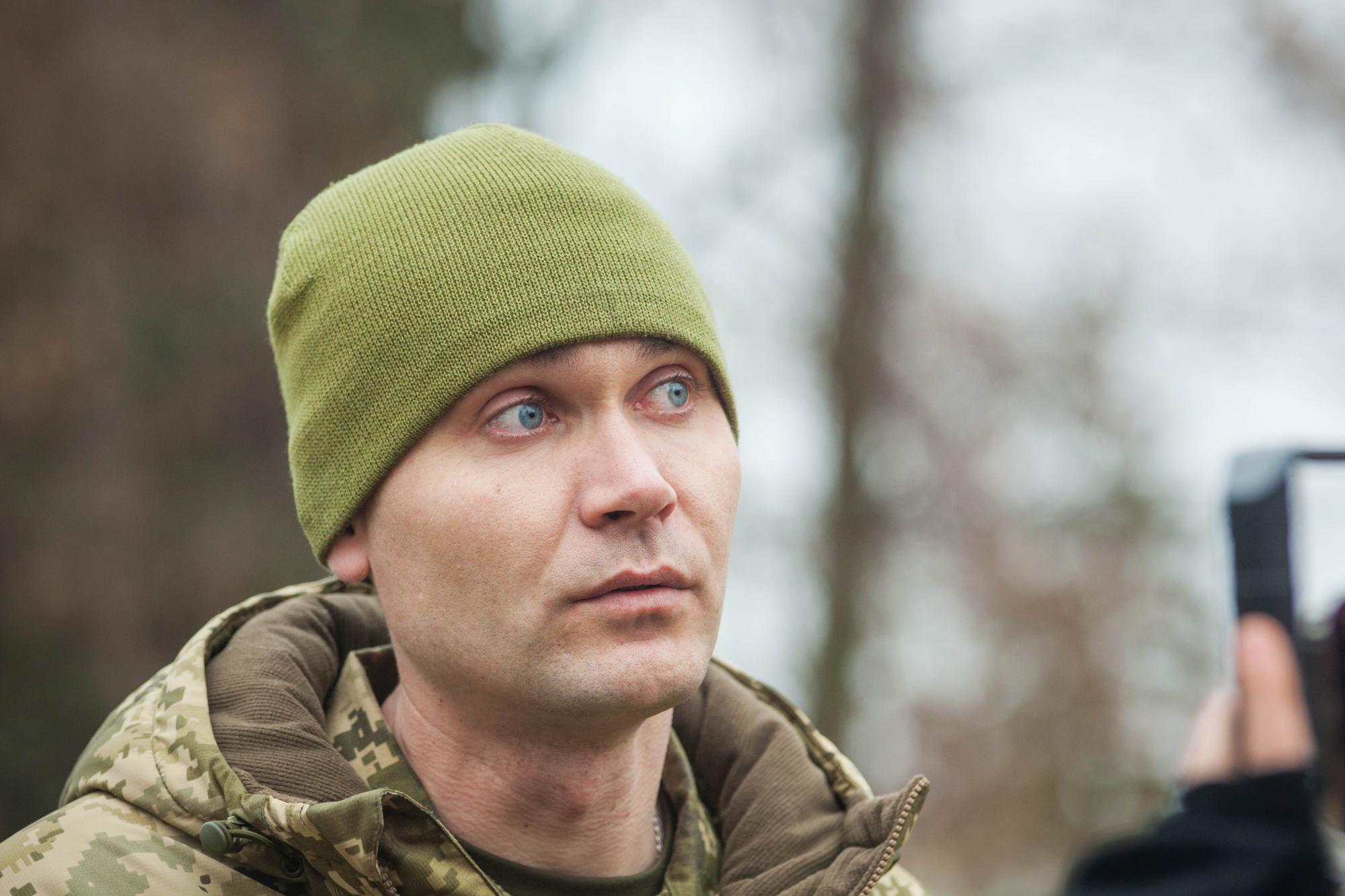
Photo: "The Russians constantly try to jam our communication frequencies, but we counteract," Dmytro Kravchenko (Oleh Bozhko/RBC-Ukraine)
"A lot has changed in our EW (electronic warfare) countermeasures over these two years. It's a daunting task. The Russians constantly try to jam our communication frequencies, but we counteract. We conduct channel backup operations used for communication. Sometimes, soldiers come up with certain methods on the spot," he adds.
Dmytro, of course, doesn't disclose their methods. He promises to share details after our victory though. However, he adds that drones have been very often used for border protection. They also utilize video surveillance cameras - not only in the north but also on the frontlines in the east and south.
"Right now, everyone on-site, from a battalion to any group commander, can see the entire front line. Technologies allow us to see and analyze the situation in great detail," says the chief of staff.
Northern border. Does the threat from Belarus persist?
From Chernihiv to one of the former border crossing points with Belarus is about 50 kilometers. There are highways from the city to the north and west of the country through which Russian troops entered Ukraine two years ago. These territories practically marked the beginning of the major war for the Chernihiv region: they were the first to encounter the enemy on the ground section. Here, on the morning of February 24, six Ukrainian border guards were the first to be wounded.
Photo: The border crossing point on the border with Belarus has been abandoned and inactive for two years (Oleh Bozhko/RBC-Ukraine)
Since the onset of the Russian invasion, Ukraine has shut down all border crossings with Belarus. One of the now-defunct checkpoints used to see about 300 vehicles, both passenger and cargo, passing through daily. This checkpoint was international, facilitating transport from the EU as well. The border effectively runs along the Dnipro River, with Belarus visible on the opposite bank.
As columns of Russian military equipment began entering Ukraine from the north, this stretch came under fire. Simultaneously, many Ukrainians attempted to return home from Belarus by car.
"We waited until all the remaining civilians had returned home. After that, the checkpoint was closed. Then, a little after 7 AM on February 24, the State Border Guard Service of Ukraine, together with the Armed Forces of Ukraine, detonated a vehicle bridge to prevent the enemy's passage into our sector of responsibility. Now, this checkpoint can only be remembered as a relic of those times," says Oleh, a border officer. That morning, he and his comrades took up defensive positions in Chernihiv.
The bridge demolition created an artificial barrier, protecting the border even now. Ukraine's borders are safeguarded not only by its defenders but also by nature. In late February, the Dnipro and Desna rivers overflowed, doubling the water levels due to heavy snowfall in the region during winter.

Photo: On the morning of February 24, border guards let Ukrainians who wanted to return home from Belarus through and, together with the Ukrainian Armed Forces, blew up a bridge across the Dnipro River (Oleh Bozhko/RBC-Ukraine)
Though the checkpoint itself lies abandoned, fortifications around the border are constantly reinforced. Anti-tank ditches, barbed wire, explosive barriers, forest obstacles, and traps for the enemy are being installed. Sentry posts are set up everywhere. Reinforced patrols stand guard where the enemy could potentially construct a pontoon crossing. In case of danger, military personnel from other units quickly join the defenders.
According to border guards, Belarusian border patrols can be seen on foot on the other side of the border. Sometimes they patrol in boats. But only on their side of the border.
"We do not observe the infiltration of sabotage and reconnaissance groups on this stretch. They penetrate the areas where Ukraine borders Russia. But February 24 proved that the possibility of a repeat 'backstabbing' from the territory of the Republic of Belarus remains daily. We are prepared, but we see that there are currently no forces in Belarus ready to launch a large-scale offensive," notes the military.
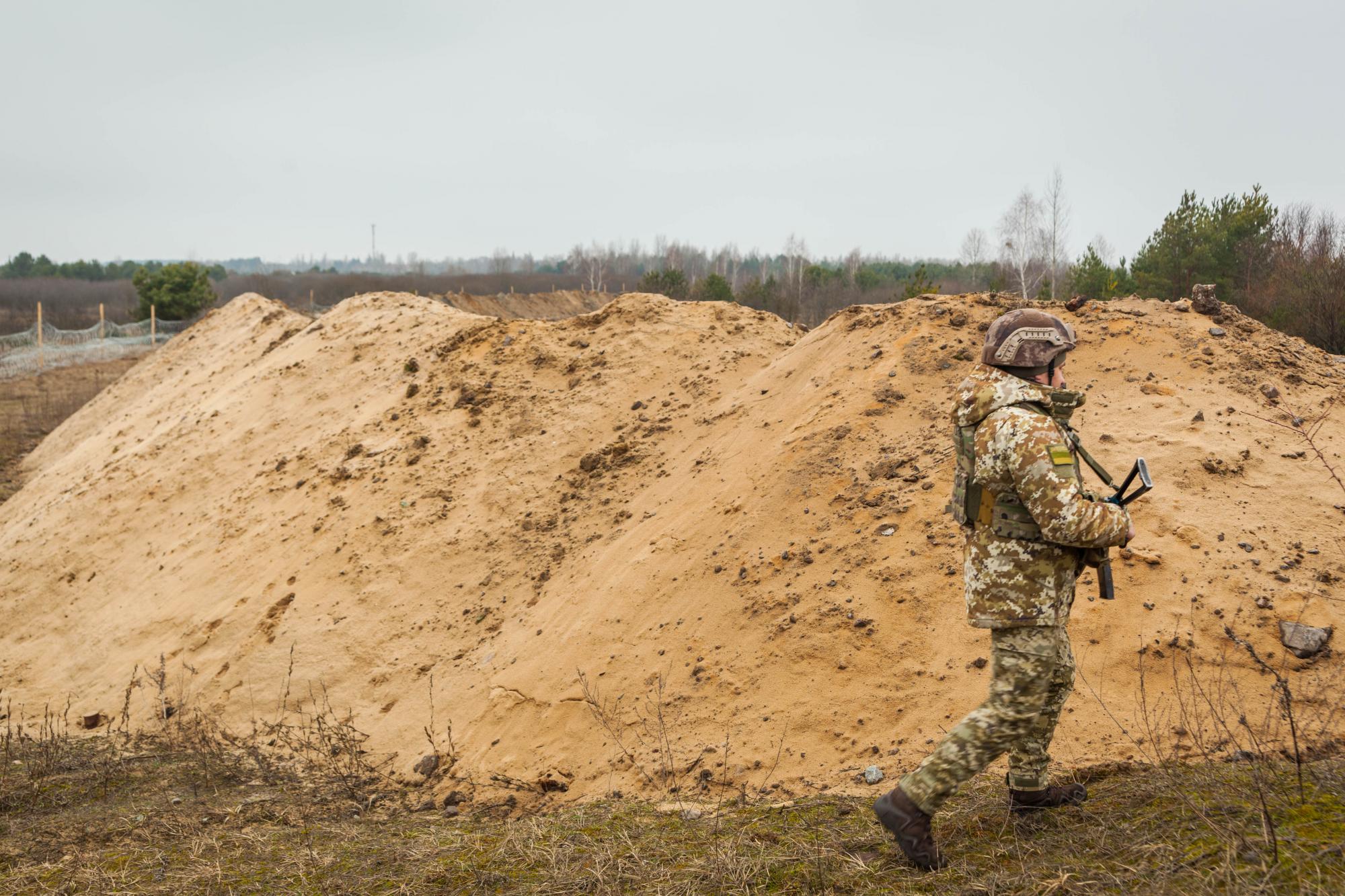
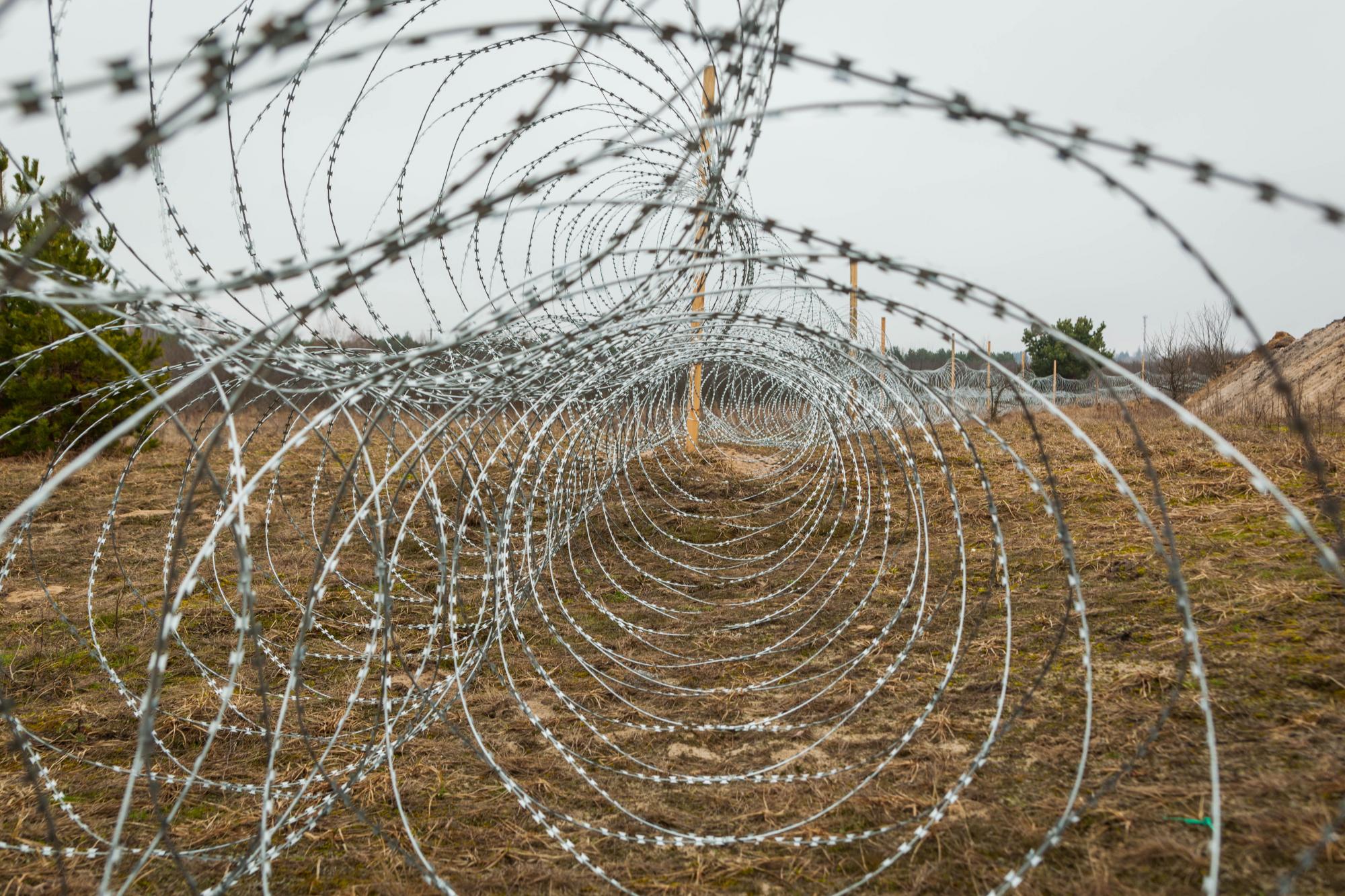
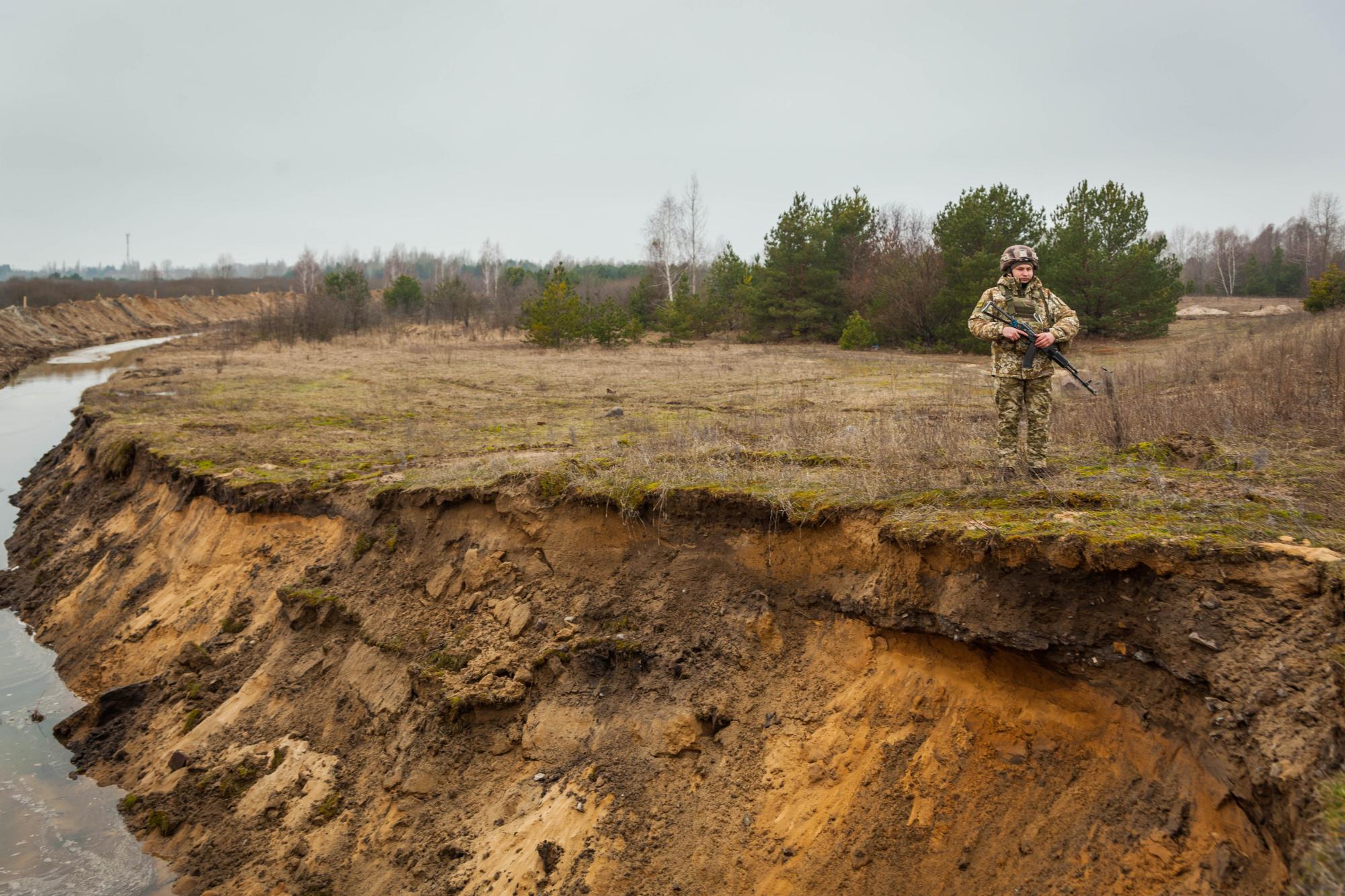
Photo: Anti-tank ditches and barbed wire are being created on the border (Oleh Bozhko/RBC-Ukraine)
Pretty much a front line. Countering subversive groups at the border
In just the first couple of weeks of 2024, there were five attempts by Russian subversive groups to infiltrate the border regions of Sumy and Chernihiv. Border guards and the Armed Forces of Ukraine sometimes record such incidents several times a week. Artillery shelling occurs regularly, and enemy drones are launched. When news of subversive groups infiltrations in the north was announced in January, the then-commander of the Joint Forces of the Armed Forces of Ukraine, Serhii Naiev, called these territories pretty much the front line with the enemy.
"For everyone's understanding: this is a real war with all the typical combat actions. Not as active, but just as deadly as on other fronts. And everyone, all conscious Ukrainians living on the state border, need to realize this," Naiev said at the time.
The infiltration of sabotage groups across the border is indeed effectively combat actions and a front line, agrees Vadym Mysnyk, an officer of the Armed Forces of Ukraine.
"The state border in the north of the country now is a real line of confrontation with the enemy. Artillery and aviation are used against us. Enemy subversive groups try to penetrate regularly. Who are they? These are professional soldiers from various special units who carry out 'missions' - the destruction of our military and civilians. Their activity has been observed throughout the winter and persists constantly," he says.
Armed groups sneak in with various objectives, explain military officials. The main goal is to keep everyone on edge and perpetrate terror.
"These sabotage groups work against both military and civilians. They shoot and destroy civilian vehicles, kill civilian citizens. They target residential infrastructure, residential buildings. In other words, they do not differentiate targets at all. These are direct terrorist actions from the Russian Federation. They want us to be afraid. But we are prepared, and we are not afraid," the officer adds.

Photo: The military conducts constant reconnaissance of the border with UAVs, laying mines, creating forest barriers (Oleh Bozhko/RBC-Ukraine)
Sabotage groups more often penetrate at night. They pass through either dense forests or along rivers. The worse the visibility, the better for them. For example, in fog or heavy snowfall, it's hard to spot them from a drone, so they are more active in winter. Or in summer when they can hide in the greenery.
In September 2023, enemy sabotage groups, once again infiltrating the Chernihiv region, replaced and detonated the bridge over the border river Sudost in the Novhorod-Siverskyi district. This same bridge had been previously attacked in the spring. The majority of the river flows through the Russian Federation, with a small stretch in Ukraine, where the waterway continues into the Desna River. That day, the occupiers destroyed the only bridge in Ukraine that crossed this river. The bridge was located just one kilometer from the border with Russia.
The officer assures that enemy saboteurs do not penetrate further than one or two kilometers into Ukrainian territory.
"It's definitely not even tens of kilometers. We're talking about a few kilometers. They have different objectives. It could be tracking our firing positions. For instance, if a sabotage group enters, we start firing at the group, and then our positions from the territory of the Russian Federation come under fire in response. So the sabotage groups are deployed to identify our firing points and then hit them with artillery," explains the defender.
The natural feature of the border region is that there are practically continuous forests everywhere. Making trenches is difficult, but everything there is fortified. Military units are positioned very densely. Defensive structures are set up everywhere. Special military groups are created to counter sabotage.
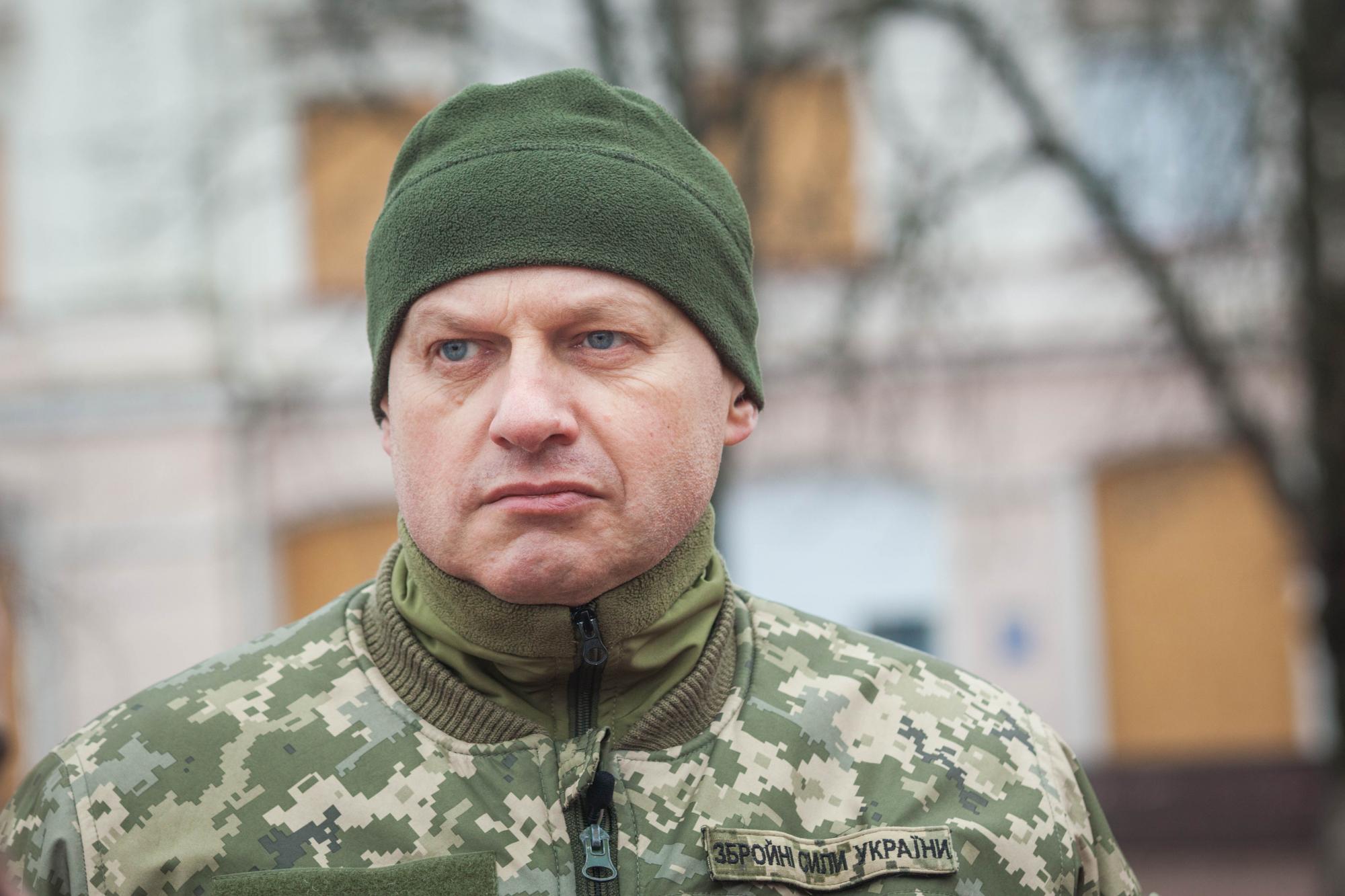
Photo: "The enemy will face a tough resistance at every meter of this land," Vadym Mysnyk (Oleh Bozhko/RBC-Ukraine)
The military conducts constant reconnaissance with drones, lays mines, and creates forest blockades. An important part of the work is done by mobile fire groups. When enemy drones or other targets fly, the military quickly moves to the scene and destroys the targets. Separate anti-sabotage reserve groups are created in each unit, operating in all directions along the border.
"There is no one universal recipe to counter the enemy at the border. It always has to be a complex of measures. The Armed Forces, Border Guards, intelligence - everyone works together here, otherwise it simply won't work. Special groups eliminate saboteurs as soon as they infiltrate. We just destroy them," says Vadym.
According to him, there is currently no group capable of launching a repeat large-scale offensive near the borders. But if Russia does attempt another northern offensive, the situation will be different from two years ago.
"We have built a very dense line of defense. Also, the rivers have flooded, and the soil is such that no vehicles can pass through. And if we blow up the bridges, it will additionally block the enemy. The forests will also help, like in World War II: there were places in this region where the Germans didn't even enter because of the density of trees. Everything was controlled by partisans. And now professional units of the Defense Forces control it. The enemy will face a tough resistance at every meter of this land," says the military officer.
